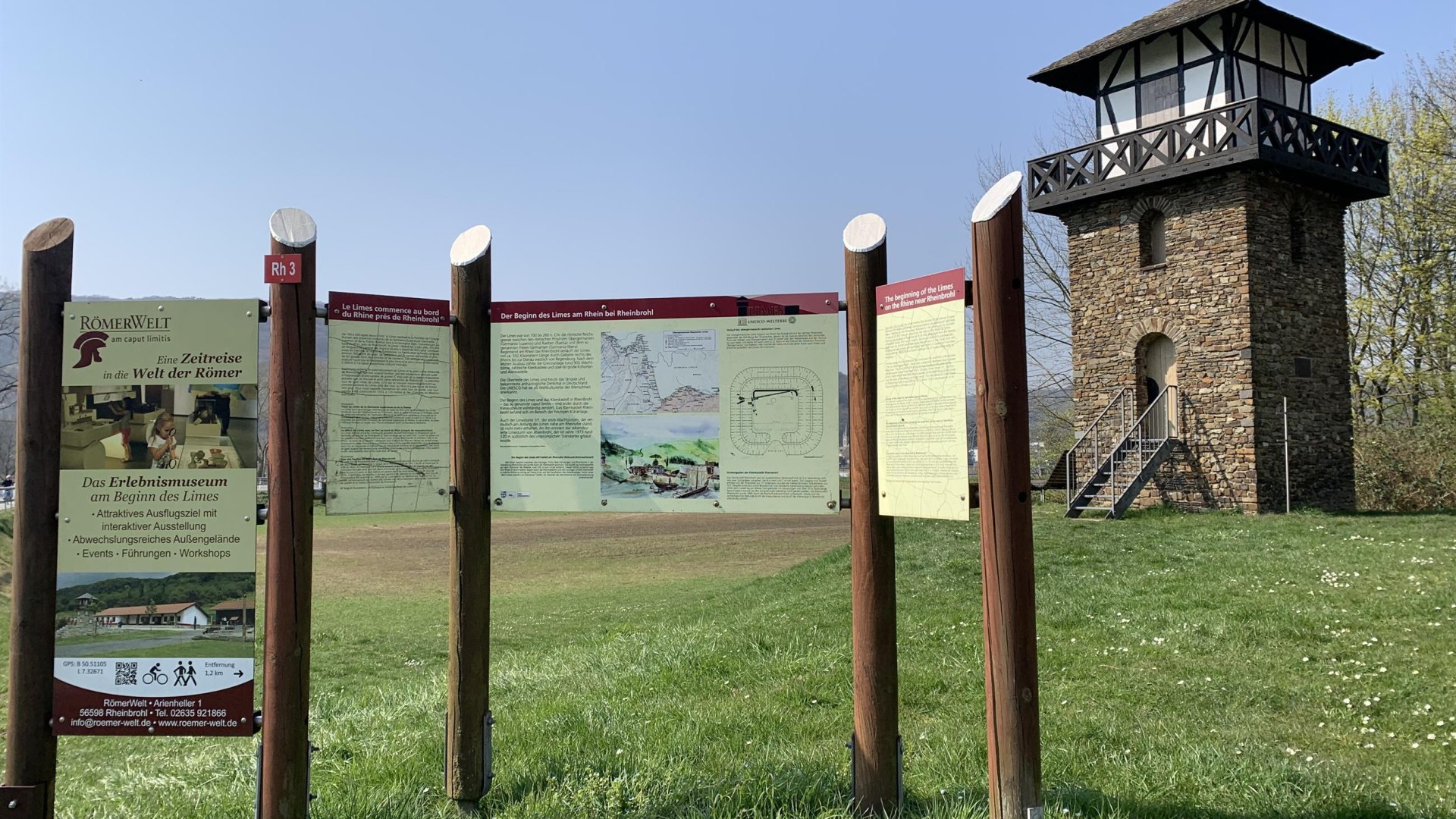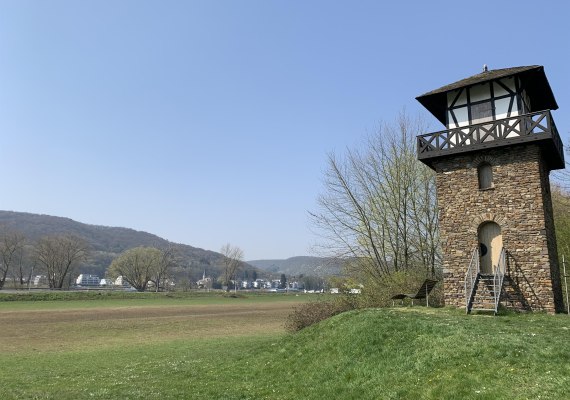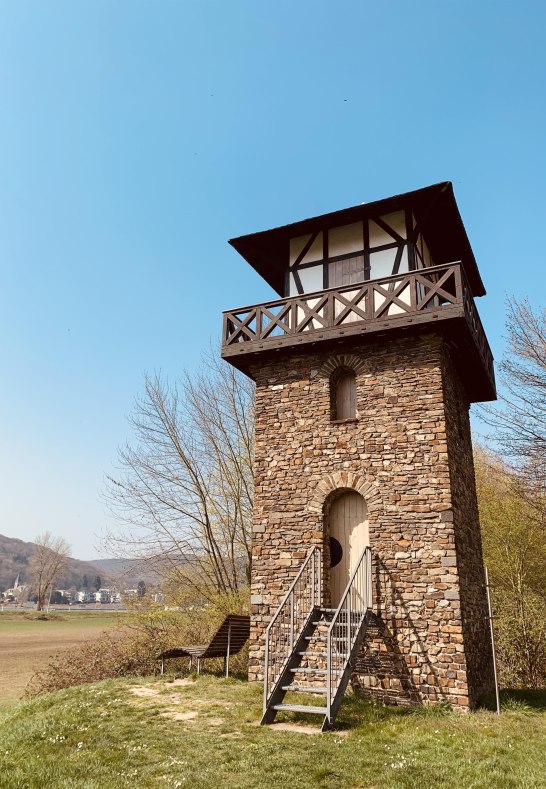Beginn des Obergermanisch-Raetischen Limes
L 87, 56598 Rheinbrohl
The Roman Empire was one of the largest empires that ever existed. The Upper Germanic-Raetian Limes is part of the Roman border fortifications with forts, watchtowers, walls and palisades with which the former world power Rome demarcated its empire from free Germania. With a total length of over 500 km, the Limes stretched from the Rhine (Rheinbrohl) to the Danube. This length makes it the longest archaeological monument in Europe.
In 2005, the Upper Germanic-Raetian Limes was added to the UNESCO World Heritage List as an extension of the site known from then on as the "Borders of the Roman Empire". Together with Hadrian's Wall and the Antonine Wall in Great Britain and Northern Ireland, the Upper Germanic-Raetian Limes thus forms a transnational World Heritage Site.
The historical course of the Limes can still be seen in the landscape of the municipality of Bad Hönningen. The former locations of the watchtowers, which are also still clearly recognisable, are marked with signs. Rheinbrohl is of particular importance because it is the site of what the Roman historian Tacitus called the "Caput Limitis", the beginning of the Upper Germanic-Raetian Limes on the right bank of the Rhine. It is not for nothing that Rheinbrohl calls itself the "wine village on the Roman Wall". The watchtower 1/1, reconstructed from Roman quarry stones near the original site, is particularly illustrative at the beginning of the Limes.




